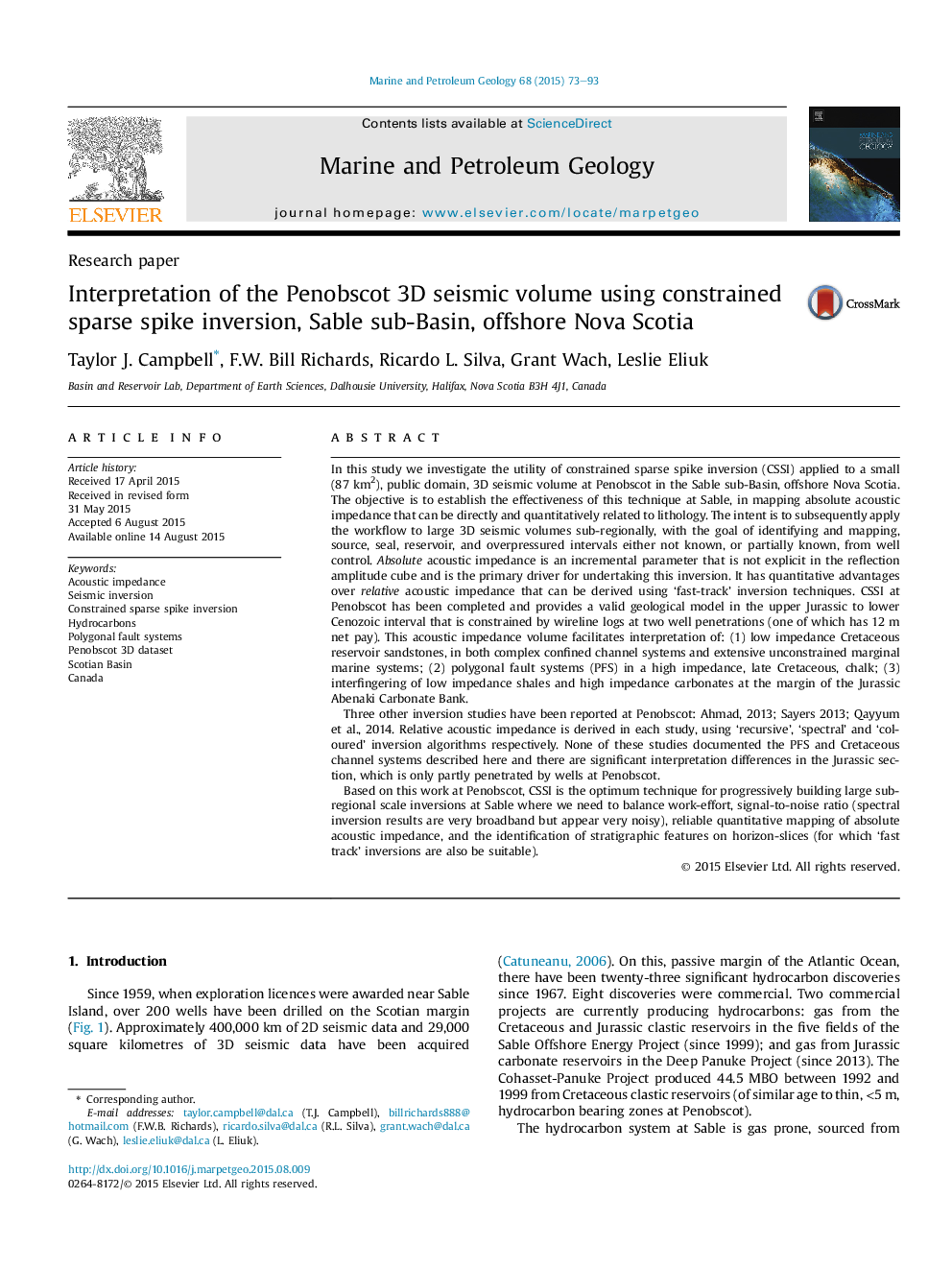| کد مقاله | کد نشریه | سال انتشار | مقاله انگلیسی | نسخه تمام متن |
|---|---|---|---|---|
| 6435076 | 1351611 | 2015 | 21 صفحه PDF | دانلود رایگان |

- We examine the constrained sparse spike inversion technique at Penobscot, NS.
- We examine the effectiveness of CSSI in mapping absolute acoustic impedance.
- Reflection amplitude and acoustic impedance data were interpreted and integrated.
- Acoustic impedance provides direct linkage to lithologies.
In this study we investigate the utility of constrained sparse spike inversion (CSSI) applied to a small (87 km2), public domain, 3D seismic volume at Penobscot in the Sable sub-Basin, offshore Nova Scotia. The objective is to establish the effectiveness of this technique at Sable, in mapping absolute acoustic impedance that can be directly and quantitatively related to lithology. The intent is to subsequently apply the workflow to large 3D seismic volumes sub-regionally, with the goal of identifying and mapping, source, seal, reservoir, and overpressured intervals either not known, or partially known, from well control. Absolute acoustic impedance is an incremental parameter that is not explicit in the reflection amplitude cube and is the primary driver for undertaking this inversion. It has quantitative advantages over relative acoustic impedance that can be derived using 'fast-track' inversion techniques. CSSI at Penobscot has been completed and provides a valid geological model in the upper Jurassic to lower Cenozoic interval that is constrained by wireline logs at two well penetrations (one of which has 12 m net pay). This acoustic impedance volume facilitates interpretation of: (1) low impedance Cretaceous reservoir sandstones, in both complex confined channel systems and extensive unconstrained marginal marine systems; (2) polygonal fault systems (PFS) in a high impedance, late Cretaceous, chalk; (3) interfingering of low impedance shales and high impedance carbonates at the margin of the Jurassic Abenaki Carbonate Bank.Three other inversion studies have been reported at Penobscot: Ahmad, 2013; Sayers 2013; Qayyum et al., 2014. Relative acoustic impedance is derived in each study, using 'recursive', 'spectral' and 'coloured' inversion algorithms respectively. None of these studies documented the PFS and Cretaceous channel systems described here and there are significant interpretation differences in the Jurassic section, which is only partly penetrated by wells at Penobscot.Based on this work at Penobscot, CSSI is the optimum technique for progressively building large sub-regional scale inversions at Sable where we need to balance work-effort, signal-to-noise ratio (spectral inversion results are very broadband but appear very noisy), reliable quantitative mapping of absolute acoustic impedance, and the identification of stratigraphic features on horizon-slices (for which 'fast track' inversions are also be suitable).
Journal: Marine and Petroleum Geology - Volume 68, Part A, December 2015, Pages 73-93